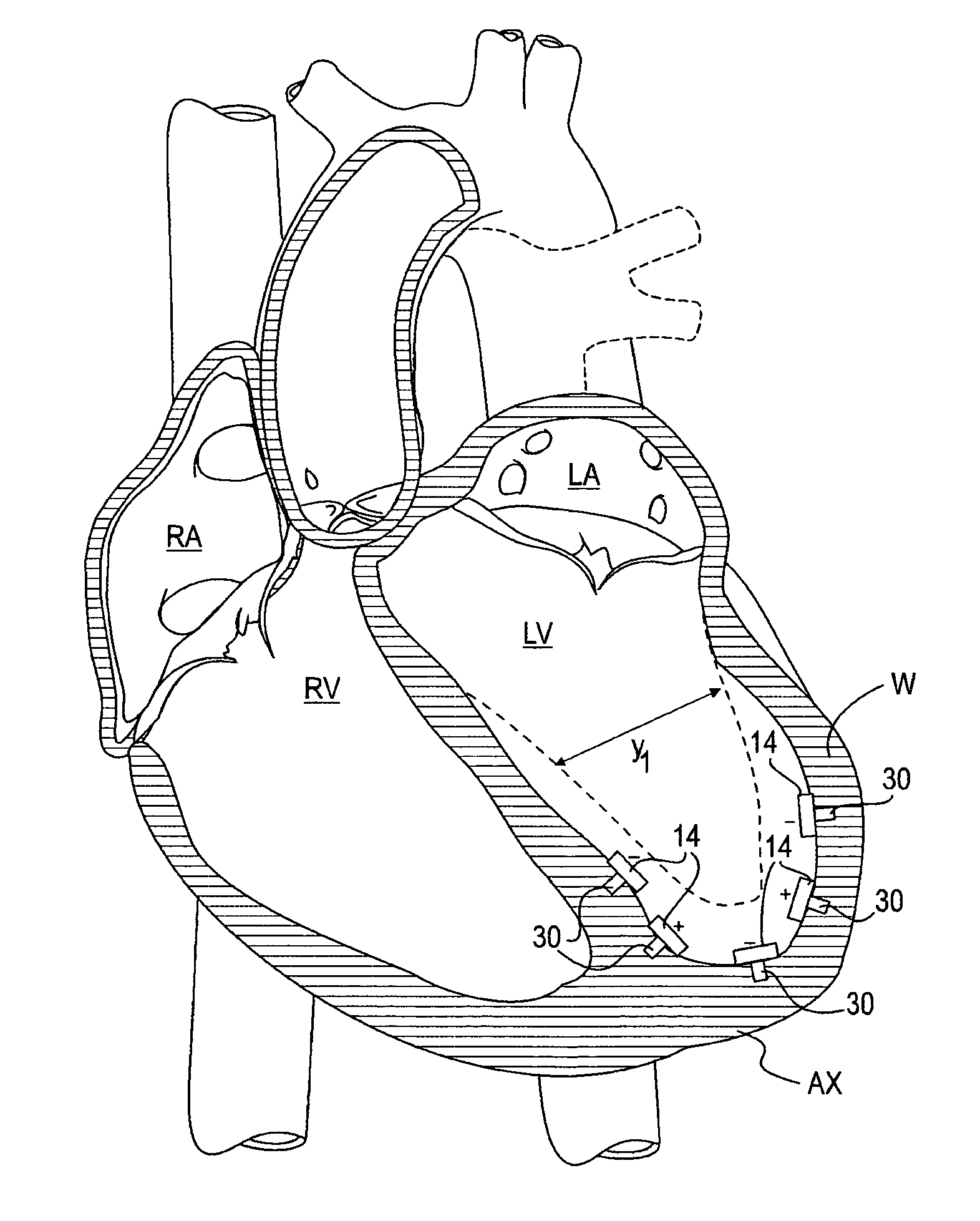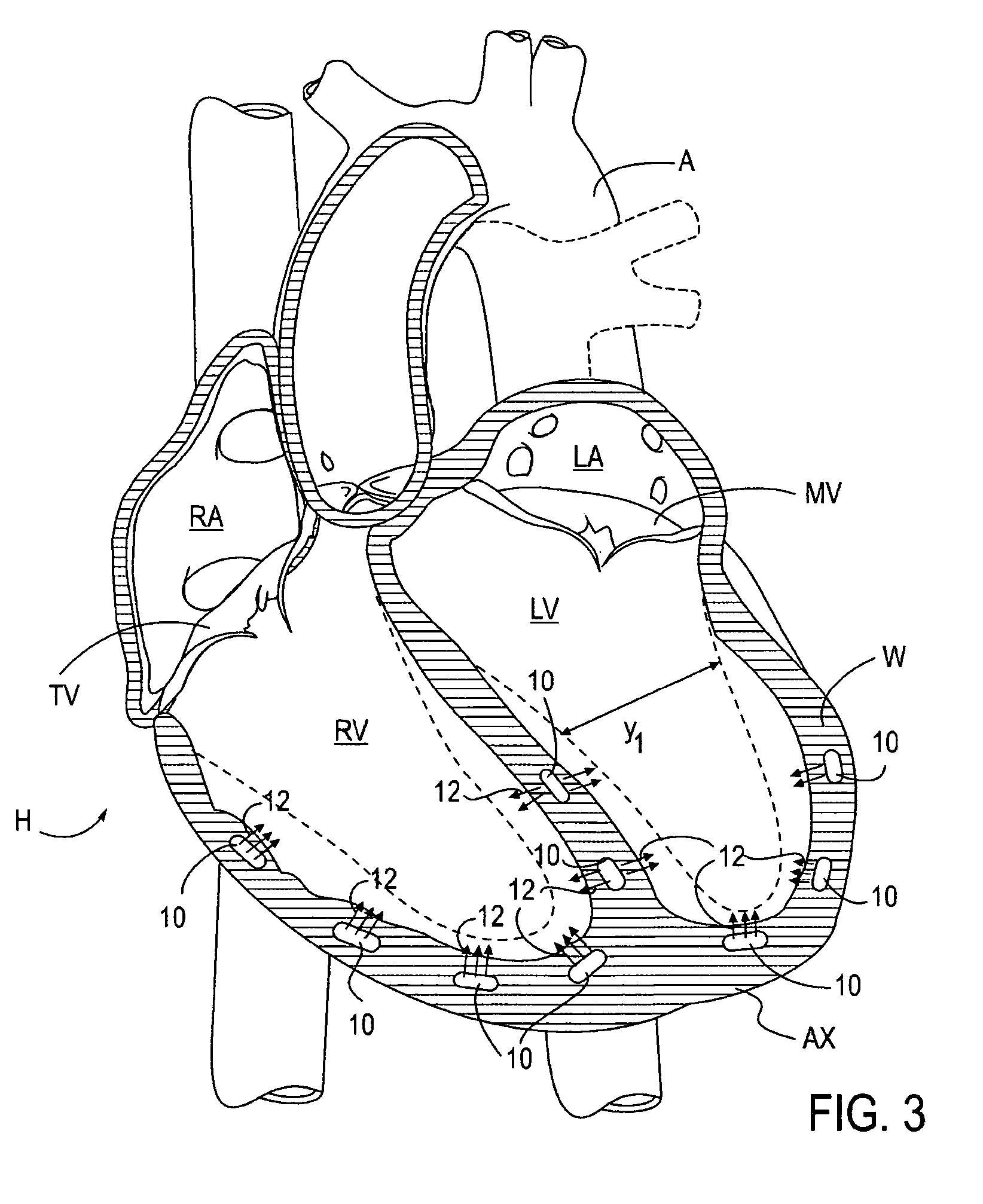Magnetic devices and methods for reshaping heart anatomy
a magnetic device and heart anatomy technology, applied in the field of magnetic devices and methods for reshaping heart anatomy, can solve the problems of increasing the enlargement of the heart, the deterioration of the myocardium, and the inability to fully recover, so as to increase the cardiac output of the heart, increase the contractibility of the ventricles, and increase the stroke volume
- Summary
- Abstract
- Description
- Claims
- Application Information
AI Technical Summary
Benefits of technology
Problems solved by technology
Method used
Image
Examples
Embodiment Construction
[0043]FIG. 1 provides a cross-sectional illustration of a heart H of a normal patient. The cross-sectional view shows the right atrium RA, right ventricle RV, left atrium LA and left ventricle LV. The right ventricle RV and left ventricle LV have a width of x1 and y1 respectively. FIG. 2 provides a cross-sectional illustration of a heart H of a patient with heart disease wherein the geometry of the ventricles RV, LV have dilated. As shown, the right ventricle RV and left ventricle LV have increased widths of x2 and y2 respectively. The increased widths x2,y2 result in poor cardiac output from the left ventricle LV and / or the right ventricle RV. Cardiac output (CO) is defined as:
CO=HR×SV
whereas[0044]HR=heart rate (beats per minute)[0045]SV=stroke volume (liters per beat)[0046]Ejection Fraction (EF) is the fraction of blood ejected by a ventricle relative to its end-diastolic volume. Therefore, EF is calculated from:
EF=(SV / EDV)*100
whereas[0047]EDV=end-diastolic volume[0048]Ejection fr...
PUM
 Login to View More
Login to View More Abstract
Description
Claims
Application Information
 Login to View More
Login to View More - R&D
- Intellectual Property
- Life Sciences
- Materials
- Tech Scout
- Unparalleled Data Quality
- Higher Quality Content
- 60% Fewer Hallucinations
Browse by: Latest US Patents, China's latest patents, Technical Efficacy Thesaurus, Application Domain, Technology Topic, Popular Technical Reports.
© 2025 PatSnap. All rights reserved.Legal|Privacy policy|Modern Slavery Act Transparency Statement|Sitemap|About US| Contact US: help@patsnap.com



